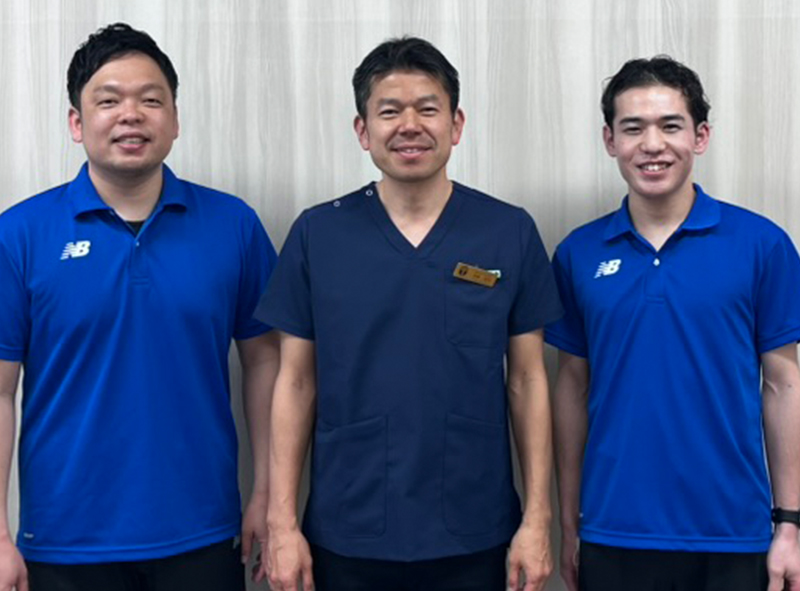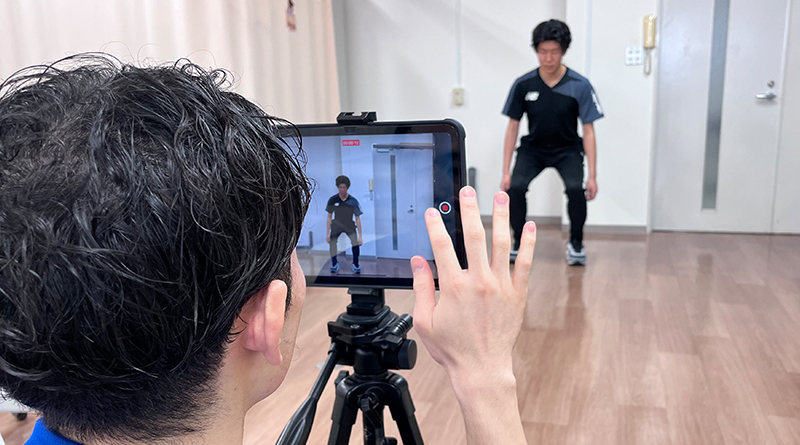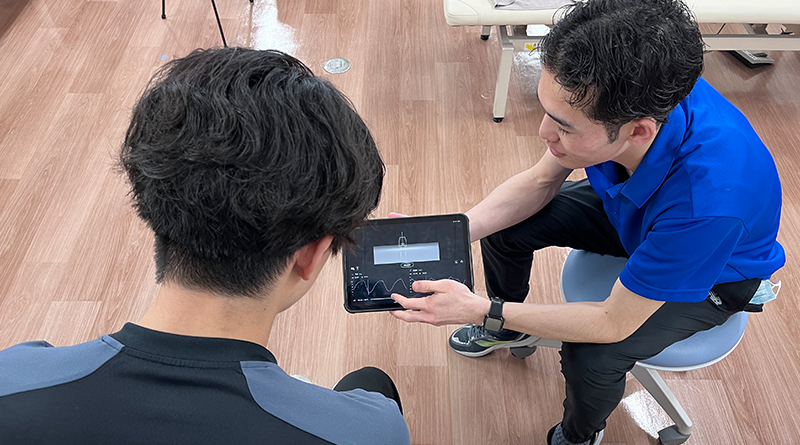Implementation record of SPLYZA Motion :
Matsudo-Nishiguchi Orthopedic Clinic

Matsudo-Nishiguchi Orthopedic Clinic | Dr. Sato & Dr. Miyoshi
■ Challenges Before Implementing SPLYZA Motion
Dr. Miyoshi:
I had experience with motion capture since my graduate school days and had used other motion analysis AI
applications in research. At our clinic, we had also used a different motion analysis AI application prior
to adopting SPLYZA Motion. However, due to space limitations in the clinic, we found it difficult to
adequately evaluate the dynamic movements specific to sports. Additionally, it was sometimes challenging to
replicate and assess actual movements that caused pain, and for complex motions such as those involving the
shoulder joint, we often had to rely on qualitative visual assessments.
Dr. Sato:
I also believe that my many years of clinical experience have helped me develop a good eye for movement
analysis. However, my evaluations still tended to be subjective. Without objective numerical data, I
sometimes felt that the feedback I gave patients lacked persuasiveness. In the past, we would record videos
and review them in slow motion, but it wasn't enough for detailed analysis, and I strongly felt the need for
a more precise evaluation tool.
■ Key Reasons for Implementing SPLYZA Motion
Dr. Miyoshi:
Most of the tools we had used in the past were developed overseas. As a result, their interfaces and support
were often in English, which sometimes made operation and interpretation challenging. In contrast, SPLYZA
Motion offers support in Japanese, which gave us confidence in adopting it. The tools we previously used
also had minor issues, such as long processing times or limited functionality restricted to specific types
of movement. When we trialed SPLYZA Motion, we found that everything from data capture to analysis was
incredibly smooth and the results were easy to understand. What ultimately convinced us to adopt it was its
intuitive Japanese-language interface and its high versatility in handling a wide range of movements.
Dr. Sato:
I had increasingly felt that objective motion analysis would be essential for the future of rehabilitation.
The fact that SPLYZA Motion can be used easily with just an iPad was also very appealing. Its ability to
view movements in 3D from multiple angles is extremely effective when explaining things to patients in a
visually understandable way. The robust Japanese-language support system was also a major factor that gave
us peace of mind in choosing to implement it.
■ Practical Use of SPLYZA Motion
For patients with sports-related conditions, we utilize SPLYZA Motion in the early stages of initial
assessment by measuring their movements and using videos or stick figures to explain the issues. For
example, we can clearly illustrate form-related problems in throwing motions or posture issues during
squats, which helps deepen patients’ understanding of their exercise therapy and rehabilitation.
Beyond the sports field, SPLYZA Motion is also used in evaluating patients with general orthopedic
conditions. In rehabilitation for knee or shoulder pain, we analyze basic movements such as squats to
objectively assess joint range of motion and habitual movement patterns through numerical data. This allows
us to create more personalized treatment plans. Additionally, when working with external sports teams, we
use the tool to film and analyze athletes’ pitching forms and provide them with specific feedback.

■ Effects After Implementing SPLYZA Motion
One of the biggest benefits has been the ability to objectively capture movement as numerical data. This has
enabled us to more accurately assess patients’ conditions and provide clear, specific explanations. The
convenience of performing 3D analysis with just a single iPad is also a major advantage in our clinic, where
space is limited.
Patient feedback has been extremely positive. Being able to visualize their movements through 3D imagery and
numerical data makes it easier for them to understand their issues, which in turn increases their motivation
for rehabilitation. Compared to before, we’ve clearly seen an improvement in patient adherence to
treatment.
Among the staff, the ability to share objective data has also enhanced internal communication. Regardless of
differences in experience levels, it has helped us deliver higher-quality, more consistent rehabilitation.
As we consider expanding the use of SPLYZA Motion to the fitness facility attached to our clinic, we believe
that sharing insights about movement and interpreting data among staff will become even more critical. In
this context, SPLYZA Motion serves as a common language for sharing objective information, contributing to
skill enhancement and stronger collaboration across the team.
■ Results After Implementation

Dr. Miyoshi:
Moving forward, our goal is to accumulate data from various cases and establish standard reference values
for movement. If we can make return-to-activity decisions based on numerical data, communication with
patients will become even smoother. Personally, I’d also like to focus more on research activities and
actively present our findings at academic conferences.
Dr. Sato:
Currently, we primarily use SPLYZA Motion to address pain-related issues, but in the future, I hope to apply
it toward performance enhancement as well. To do so, we need to deepen our understanding of movement
benchmarks and explore new possibilities, including utilizing the system in the fitness facility attached to
our clinic.